Most of cities and larger towns in Thailand have some kind of local transport system. In largest cities it can be a network of buses but in most cases it will be just a network of songthaews, with set fares and routes but not rigid timetabling. Local transport system usually is complemented by various taxi services such as metered taxis, motorbike taxis and tuk-tuks.
Buses and Songthaews
A few larger cities such as Bangkok, Nakhon Ratchasima, Ubon Ratchathani and Phitsanulok have a local bus network. The network operates not only in the city but extends to the suburbs as well. Buses usually operate from dawn till dusk and Bangkok even has night buses running 24 hours per day. Before you go, read more about Bangkok's Public Buses.
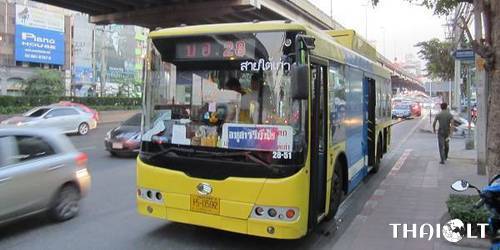
You can get on the bus at bus stops with a sign of the bus and bus numbers on them. Tickets are bought on board the buses. Fares depend on the type of the bus and for some routes can vary depending on distance and it can cost anything between 7 to 24 THB. To alert the driver that you want to get off, press a buzzer in advance (before the bus reaches your stop).
The main mean of transport in most of large and medium-sized towns is songthaews. The size and shape of vehicle used varies from town to town. Usually songthaews follow fixed routes and have set fares but the timetable isn’t rigid as in many cases they wait until they are full enough before leaving. In some towns, most notably in Chiang Mai, songthaews are picking up a number of people who are going in the same direction and taking each of them right to their destination.
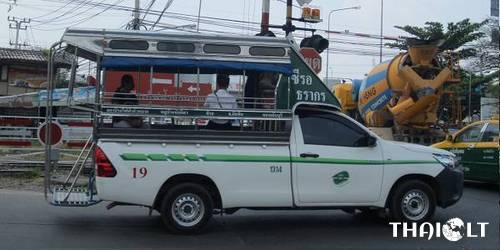
To hail a songthaew just flag it down, and to indicate that you want to get out, press a buzzer (usually the button is on the ceiling) or rap hard with a coin on the metal railings. Fares within towns usually are between 10 to 20 THB, depending on distance. Fare should be paid to the driver after leaving songthaew.
Metered Taxis
Metered taxis can be a comfortable and affordable way to get around cities in Thailand. Brightly coloured taxis can be found in Bangkok and a number of other larger cities.
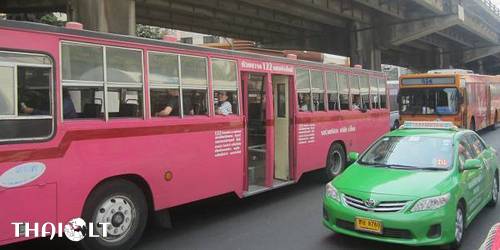
For getting a fair price, you should make sure that the meter is on. In large cities like Bangkok, if the driver refuses to put the meter on, just get out and get another taxi – there are plenty of them on the street and you won’t have a problem to find a driver not refusing to put the meter on.
In smaller cities and on the islands the taxi might not have a meter and most probably will be working on set fares. A set fee might be bargained down a bit but don’t expect too much.
Some of airport taxis use the meter, some might add a surcharge to it and others have set fares. Usually it depends on the airport.
Passengers are required to pay any road tolls on top of any metered fare, unless you bargained for a set fare and agreed that it includes all tolls.
For longer distance trips outside the cities, the price is always negotiated.
Tuk-Tuks
The three-wheeled, open-sided tuk-tuks are the classic Thai vehicles that may be found on the streets of most Thai cities. Tuk-tuks are not only serving as attraction for many foreign visitors but as useful option for transporting people and supplies by locals as well, making them so popular in Thailand. They are not as dangerous as they look and can be a fun way to get around.
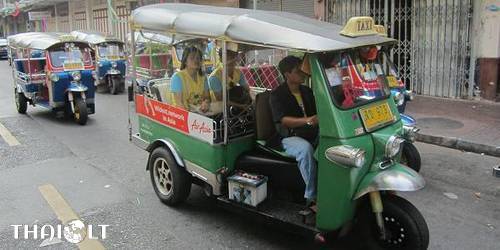
The cost of a tuk-tuk ride is about the same as a metered taxi fare in Bangkok. Fares come in at around 60 THB for a medium-length journey (over 100 THB in Bangkok) regardless of the number of passengers. Over-charging is quite common with tuk-tuk drivers so you should always agree on a fare before setting off.
Motorbike Taxis
Motorbike taxis feature both in towns and in remote places.
In towns motorbike taxi drivers are identified by coloured, numbered vests. They are often used just for journeys up and down sois but might be suitable for the single traveller wishing to dodge traffic jams.
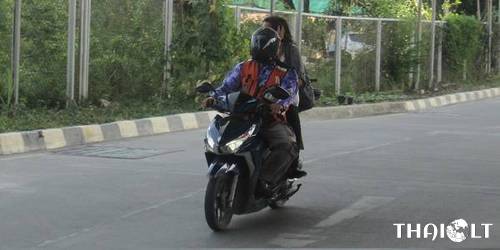
In remote spots motorbike taxis are often the only alternative to walking or hitching. They are especially useful for getting around car-free islands such as Koh Phayam and to remote national parks or ancient ruins.
Within towns motorbike-taxi fares can start at 10 THB for very short journeys down the soi. If you don’t know the right fare, you should set the price with the driver before you get on motorbike. Fares to major nearby places are usually posted on a board at motorbike taxi corners so you should look for one. Even if they are in Thai it’s possible to get an idea for how much rides should cost.
For longer trips fares should be negotiated. You should expect to pay at least 200 THB for a 20 km round trip to the outskirts.
Light Rail Systems
Bangkok is the only city in Thailand currently served by three rapid transit systems: the elevated BTS Skytrain, the underground MRT and the Airport Rail Link. The BTS Skytrain and the underground MRT systems connect the main shopping, entertainment and business areas of the city. The Airport Rail Link connects Suvarnabhumi Airport with central Bangkok.
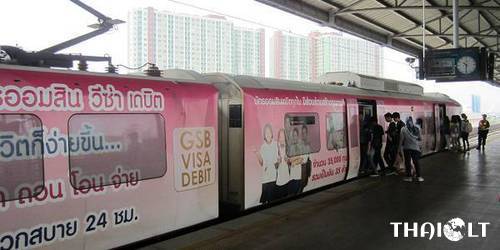
Water Transport
Water-based transport is present not only on the islands but still plays an important role in Bangkok too. Several water bus services serve commuters daily. Chao Phraya Express Boat service carries passengers along the river, Khlong Saen Saep boat service serves on 2 of Bankok's canals, and passenger ferries help to cross the Chao Phraya river at thirty-two river crossings.
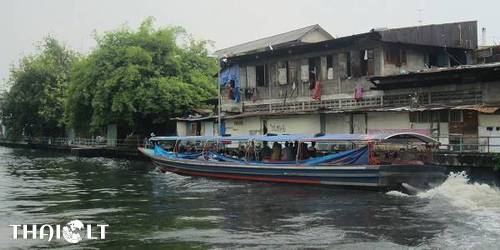
Tips
Tips on taking local transport in Bangkok can be found in our Bangkok Transport list.
Check our Frequently Asked Questions about public transportation in Bangkok and ask your own question if it's not answered there yet.Any Questions?
